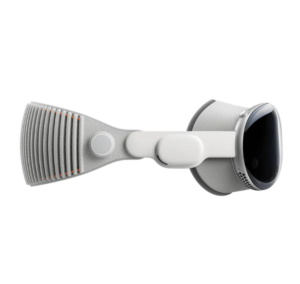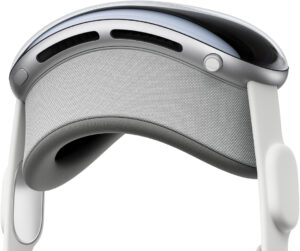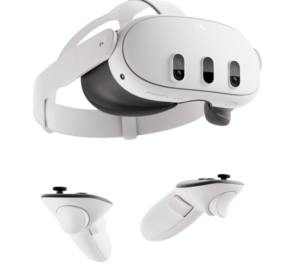This article explores the latest virtual reality technologies (VR). We’ll discuss major VR trends in 2024, make predictions, and explain why companies should consider partnering with a VR development company now.
This article dives into the hottest VR trends of 2024, explores future possibilities based on current data, and explains why VR is a valuable investment for businesses looking to leverage immersive technology for training purposes.
What are some Prominent VR Trends in today’s world?
- Immersive Educational Experiences: VR makes education premium by making it possible for students and teachers in history, geography, science, and even medical classes to have a close-up view of the events or concepts being taught.
- Hyper-realistic Virtual Reality: Some features tend to make reality and fantasy indistinct with features such as touch, smell, and taste imitations.
- Expansion of Social VR Platforms: Social VR enables users to socialize, participate in events, and engage in gameplay, and serves as a step towards creating a closely connected VR world.
- Integration of AI in Virtual Reality: AI shall make VR more personal by studying and understanding how a specific user interacts with the virtual environment and adjusting the world to fit them better.
- Adoption of VR in the Business World: It came to light that VR is not just useful for entertainment and fun or games and play, but it is also useful in other business applications such as training, designing, prototyping, and customer relations.
To sum it up, the findings of the study regarding the users’ behavior in the latest virtual reality technologies in 2024 truly envisage a sea change in the gestural interface paradigm with digital objects. Consequently, virtual reality remains far from being considered an entertainment gadget or a mere toy. The latest virtual reality technologies are interactive, revolutionary, and communal technology that is defining and revolutionizing sectors and even our conception of the physical world. By extending to every aspect of life, including learning processes, entertainment, commerce, and interpersonal communications, the latest virtual reality technologies have become an integrated part of human existence.
In the future digital the virtual reality setup can without doubt be deemed revolutionary. Although the current developments reveal some of the potential viewable, virtual reality still has great potential now only realized in showing us what is yet to come in this captivating digital odyssey.
Is Metaverse the Biggest VR Story of 2024?
In recent weeks, the term “metaverse” has become increasingly popular and, like many others, you might not know what it means. Fasten your seatbelts, because soon we’re going to discover everything about its origin, functions, and connection with the VR universe.
Origin Story: Transitions: From Sci-Fi to Potential Reality
The metaverse idea came to fruition from Neal Stephenson’s science fiction novel “Snow Crash” which was published in 1992. The book portrays a complex society in which individuals go about performing activities in the actual world by operating a persona called avatars. What started as a work of fiction inspired the masses and has now become a blueprint of what we want the metaverse to look like.
The Purpose of the Metaverse: Between Physical and Virtual: Television Formats and Transmedia Interactions
The metaverse is not just ‘Second Life’ but much broader: it is a virtual 3D space connected through technology such as VR headsets, augmented reality applications, and even desktops. The purpose? This purpose is to design and develop an environment that supports and sustains the continuity of life online and ways of experiencing life. It is the manifestation of the latest virtual reality technologies.
Think of the friends whom you can invite to a concert, which is like a virtual hall where everyone is an avatar, and they can be from any part of the world. Or think about working with colleagues on a project in which you can exchange documents and messages regardless of the distance. The metaverse is to challenge geographical divides and bring forth a new environment for interaction, fun, and even professional development.
VR: A Helping Hand to Navigate the Metaverse
Virtual reality has an essential role in the concept of the metaverse. Mobile AR and VR devices such as the Oculus Quest or the HTC Vive immersively place users into a virtual world, allowing them an enhanced level of engagement. Simply think about the situation in which you are watching an online concert and feel like you are surrounded by the song and the audience.
However, the metaverse is not solely a VR phenomenon. Another possible means to enter the metaverse can be augmented reality, in which people immerse into the actual world overlaid with digital objects. For example, there are smart glasses/AR glasses that help you get information about virtual objects/locations within your physical environment.
Reigning in the VR Market: Can We Talk About Metaverse Overload?
Although the metaverse implements VR as a way in, it is not the only absolute monarch. The term metaverse refers to a more encompassing framework of which these technologies are a part. Compared to fixed games, the latest technologies of virtual reality is more immersive but not without issues like its relative cost and potential for leading to motion sickness.
As such the notion of the metaverse is still somewhat embryonic and still developing. There are still problems to solve, for example, multiple virtual platforms cannot be integrated fluently, and realistic avatars that are recognized universally have to be created.
The Future of Metaverse and VR: Harboring a symbiotic relationship
Even though VR may not be the only complete metaverse but certainly will play a big part. In the case of the metaverse, while current VR equipment is still pricey and complex for common use, more future developments are expected to occur, making them a much larger access point.
It can also be deciphered from the information above that metaverse and VR are closely related. The metaverse can be viewed as a very promising space for interaction on the Internet in the future, and VR can be deemed as a suitable platform for the implementation of the metaverse concept. With further advancements in technology, individuals are likely to experience even more creativity regarding business, leisure, friendship, and other essential facets of life within a virtual and physical reality.
Some Latest VR Headsets for you.
Here are a few of the VR Headsets we are going to discuss:
Apple Vision Pro: ⭐⭐⭐⭐⭐
Meta Quest 3: ⭐⭐⭐⭐
Meta Quest Pro: ⭐⭐⭐
Sony PlayStation VR2: ⭐⭐⭐⭐
HTC Vive Pro 2: ⭐⭐⭐
-
Apple Vision Pro: Redefining Mixed Reality


Our rating: ⭐⭐⭐⭐⭐
Buy NowSpecs and Strengths:
The design of the Apple Vision Pro, which combines a high-tech look and precise aesthetics, shows that it is possible to have an even more advanced appearance when using MR. One of the notable features is the use of high-resolution displays, the integration of high-end processors, and the inclusion of eye-tracking and hand-tracking technology. This makes it ideal for combining thing reality and virtual reality, especially in areas such as architecture, teaching and learning, and gaming. Unfortunately, the specific specifications have not been released, but it is guaranteed that due to the manufacturer’s repute Apple, the graphics quality of the screen will be magnificent and engaging. The eye and hand tracking features enhance the ability to interact with virtual objects to the extent that it feels almost too natural.
Price Range:
Relying on Apple’s typical pricing model and the impressive features, it is safe to assume that the Apple Vision Pro will cost more than $2,999, its minimum price for the next Apple device class, and could range as high as $5,000.
Who it’s for:
The Apple Vision Pro is recommended for innovative and creative users like graphics designers, and anyone who desires to have an immersive MR experience. However, if you’re not really limited by the budget and seeking an innovative headset on the market, the Apple Vision Pro may be quite suitable.
-
Meta Quest3: The Standalone VR Sweet Spot


Our rating: ⭐⭐⭐⭐
Buy NowSpecs and Strengths:
The Meta Quest 3 expands upon the innovation and design of the previous models and brings standalone VR functionality without the need for PC tethering. Presumably, it might offer better computation and visualization performance than the Quest 2, as well as it promises an ergonomic build and intuitive UI. The Quest 3 is an apt choice for gamers, movie lovers, and individuals who are interested in virtual fitness, device interaction, and more.
Price Range:
You should expect the Meta Quest 3 to remain in this mid-tier price bracket and could be approximately $499.
Who it’s for:
Overall, Meta Quest 3 is perfect for VR beginners and those who do not need a display with maximum functionality but a good set of characteristics at an affordable price. Due to its simplicity in usage and the various usages it has, it should be a favorite among many users.
-
Meta Quest Pro: Powerhouse for VR Enthusiasts

Our Rating: ⭐⭐⭐
Buy NowSpecs and Strengths:
To cater to the higher-end VR application, the Meta Quest Pro targets individuals who would like more raw speed and power of the device. There are probably even higher definition screens, a better graphics card, as well as better motion detection compared to the Quest 3. It might also contain elements that are more oriented for productivity purposes, like improved hand tracking for rotations in VR.
Price Range:
It is hoped that the Meta Quest Pro will cost more money than the Quest 3; they should begin at approximately $799 and range up to $999.
Who it’s for:
Valve recommends using an Ethernet connection for peak performance while in VR, which means VR users can consider the Meta Quest Pro if they want a device that won’t let them down in terms of performance for gaming, content creation, or any business application. What is more, these benefits are available only, if to pay more money, that’s why it is not perfect for everyone.
-
Sony PlayStation VR2: Immersion for PlayStation Fans

Our Rating:⭐⭐⭐⭐
Buy Now
Specs and Strengths:
The PSVR2 has major hardware components to ensure that PlayStation fans get to enjoy the best VR outcome possible. There are two OLED screens with a resolution of 2000 x 2040 per eye for the clearest picture and a 120Hz refresh rate for smooth transitions between scenes. Having a 110-degree field of view, at night you will get a feeling of you being in the game environment. In addition, the PSVR2 features future-level controllers characterized by haptic feedback and adaptive triggers as in the case of the controllers of the PS5. Such characteristics give realistic haptic feedback, such as a string of a virtual bow or the effect of a punch.
Price:
PlayStation VR2 is believed to cost $550 or the same as the size of a high-end gaming computer. This places it well among competing VRs especially when factoring its strong correlation with the PS5 games console.
Who It’s For:
In this light, the PSVR2 is perfect for anyone with PlayStation 5 who would love to explore video games in virtual reality. It is intuitive to navigate, and well integrated with the PS5, and the catalog of titles developed for PlayStation VR keeps growing with games tailored for this platform. For newcomers to VR, or those seeking a new form of immersion, the PSVR2 provides an enticing entryway into engrossing realms.
-
HTC Vive Pro 2: High-Fidelity VR for Enthusiasts

Our Rating: ⭐⭐⭐
Buy Now
Specs and Strengths:
Industry-Leading Resolution: The Vive Pro 2 also incorporates a head-mount with two AMOLED displays which have a total pixel count of 4800 x 2448. Of course, it means that VR images are as clear as they get with most devices of this type out there and provide users with a close-to-life immersion in virtual environments.
Smooth and Expansive View: Owing to the 120Hz refresh rate, it offers smooth movement free from the blur effect that can hinder the performance of even the most demanding VR game. Furthermore, a wider field of view of 120 degrees allows us to increase the area of vision during such interactions and to feel closer to the possibility of natural human vision.
Accurate Tracking: The Vive Pro 2 is powered with Steam VR tracking and the Lighthouse base stations which are optional for the tracking of movements. This provides more range of motion and helps avoid tracking problems that are essential in games and applications/games that require high levels of precision.
Price:
The HTC Vive Pro 2 features good points for coming at a high cost. However, the headset itself can cost about USD 799, though the base stations and controllers are necessary to fully utilize it, which would raise the overall amount.
Who It’s For:
The HTC Vive Pro 2 might be one of the best VR systems on the market, but it’s not for those who only occasionally use it. Due to the plug-and-play setup and the price it is best suited for VR enthusiasts and professionals that want to have the best graphics and tracking of their playspace. For high-end PC owners who like to game as well as for professionals who require workplace VR, the Vive Pro 2 could be one of the best. But for the standard user and those who might not be willing to spend a lot of money on the equipment, then there are far better devices for VR out there.







